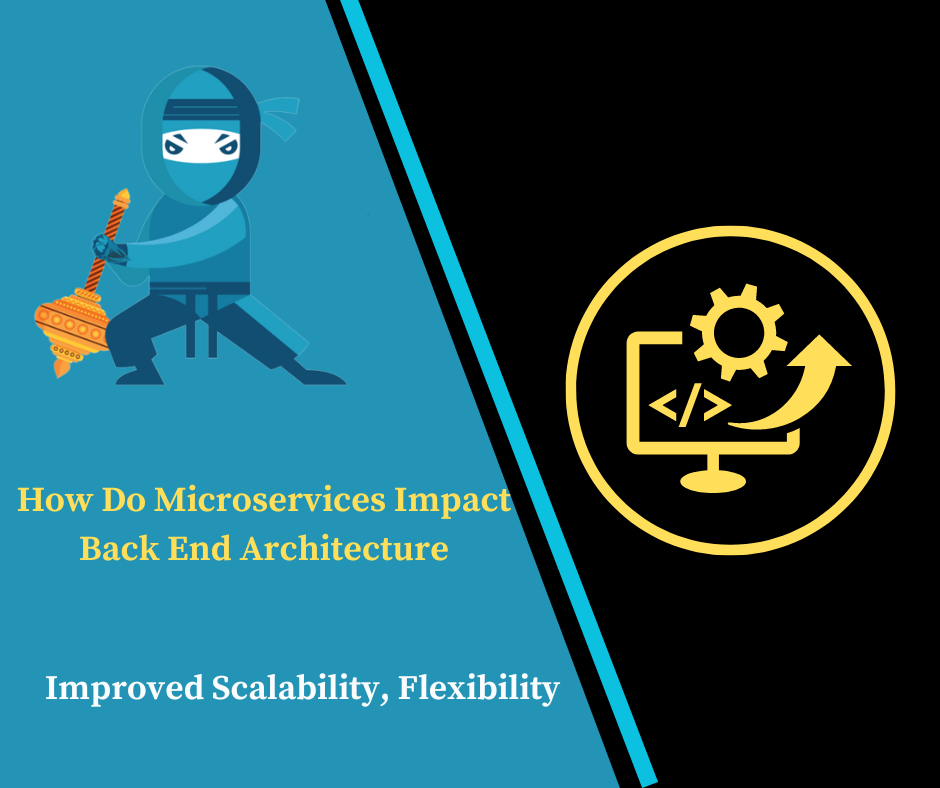How Do Microservices Impact Back End Architecture

What is Microservices Back End Architecture
Microservices Back End Architecture refers to a design approach where a back-end system is structured as a collection of small, independent services, each responsible for a specific functionality within an application. This architecture contrasts with monolithic systems, where the entire application is built as a single, interconnected unit.
What Are Microservices?
Microservices are an architectural style where a complex application is composed of small, independent services that communicate over a network. Each is designed to handle a specific business function and can be developed, deployed, and scaled independently. This contrasts with a monolithic architecture, where all components are tightly integrated into a single application
![]()
Key Characteristics
Modular Design: The application is divided into distinct microservices, each handling a specific business function or domain. For example, an e-commerce application might have separate for user management, product catalog, and order processing.
Independence: Each microservice operates independently of others. This means they can be developed, deployed, and scaled separately. They communicate through well-defined APIs, often using HTTP/REST, gRPC, or messaging queues.
Technology Diversity: Microservices allow different technologies to be used for various services. This means a service might be built using one programming language or framework, while another service uses something entirely different, based on what best fits its needs.
Decentralized Data Management: Unlike monolithic architectures that usually rely on a single database, often use separate databases or data stores for each service. This decentralization helps to manage data more effectively and supports the independent operation of each service.
Fault Isolation: The isolation of services helps contain failures within the individual. If one service encounters a problem, it does not necessarily bring down the entire system, thus improving the overall reliability of the application.
Scalability: Microservices enable targeted scaling. Instead of scaling the entire application, only the services experiencing high demand can be scaled. This approach optimizes resource utilization and performance.
Also read: How Can You Optimize E-Commerce Website for Mobile Users
Advantages
Flexibility: Teams can work on different microservices concurrently without interfering with each other’s work.
Faster Deployment: Individual services can be updated and deployed independently, leading to more frequent releases.
Enhanced Fault Tolerance: Failures in one service are isolated, minimizing the impact on the overall system.
Challenges
Complexity: Managing multiple services can introduce complexity in terms of communication, data consistency, and overall system orchestration.
Operational Overhead: Each microservice may require its monitoring, logging, and management tools, adding operational overhead.
Inter-Service Communication: Ensuring reliable and efficient communication between services can be challenging.
Also read: Top Web Design Company in Yamuna Nagar
Also read: How do you Measure Email Marketing ROI effectively
How Do Microservices Impact Back-End Architecture
The rise of microservices has revolutionized the way modern applications are built and managed. Breaking down a monolithic application into smaller, manageable services, offers scalability, flexibility, and resilience. But how exactly does it impact back-end architecture? This article explores the transformative effects of back-end architecture, highlighting their benefits, challenges, and best practices.
The Impact of Microservices on Back-End Architecture
1. Scalability
Microservices enhance scalability by allowing individual components to be scaled independently. Unlike monolithic systems where scaling requires duplicating the entire application, enable targeted scaling of only the services experiencing high demand. This efficiency can lead to more responsive and cost-effective systems.
2. Flexibility and Technology Diversity
One of the key benefits of microservices is the flexibility they offer in terms of technology stack. Each can be built using the best-suited technology for its specific task. This means developers can choose different programming languages, databases, and tools for different services, optimizing performance and productivity.
3. Resilience and Fault Isolation
Microservices promote resilience in back-end architecture by isolating faults within individual services. If one service fails, it does not bring down the entire system, unlike in a monolithic architecture where a failure can affect the whole application. This isolation enhances the overall reliability and uptime of the application.
4. Deployment and Continuous Integration
Microservices streamline the deployment process by enabling continuous integration and delivery (CI/CD). Services can be deployed independently, allowing for faster releases and updates. This modular approach also simplifies testing and reduces the risk of deployment failures impacting the entire application.
5. Complexity Management
While microservices provide many benefits, they also introduce complexity in terms of service management, inter-service communication, and data consistency. Developers must handle issues related to service discovery, load balancing, and distributed transactions, which can complicate the development process.
6. Data Management and Consistency
Managing data consistency across microservices can be challenging. Unlike monolithic systems where a single database handles all data, often relies on decentralized data storage. Ensuring data consistency and integrity across services requires implementing strategies like eventual consistency or distributed transactions.
Best Practices for Implementing Microservices
1. Define Clear Boundaries
Establish well-defined boundaries for each to avoid overlap and ensure clear responsibilities. This helps maintain modularity and reduces interdependencies.
2. Implement Robust APIs
Develop APIs with proper versioning and documentation. This facilitates smooth communication between services and ensures compatibility as services evolve.
3. Adopt a DevOps Approach
Implement continuous integration and continuous deployment (CI/CD) pipelines to streamline development and deployment processes. This helps manage the increased complexity of microservices.
4. Monitor and Log Effectively
Use comprehensive monitoring and logging tools to track the performance and health of each. This helps in identifying issues and ensuring the reliability of the system.
5. Ensure Data Consistency
Implement strategies for maintaining data consistency across services, such as event-driven architecture or distributed transactions, to handle the challenges of decentralized data management.
FAQ
What is the main advantage of using microservices over a monolithic architecture?
The main advantage of microservices is scalability. allow for independent scaling of services, which leads to more efficient resource use and can handle high traffic better than a monolithic architecture.
How do microservices affect deployment processes?
Microservices simplify deployment processes by allowing independent deployment of services. This enables continuous integration and delivery (CI/CD), resulting in faster updates and reduced risk of system-wide failures.
What challenges come with adopting a microservices architecture?
Key challenges include managing service complexity, ensuring reliable inter-service communication, handling distributed data consistency, and dealing with increased overhead for service management.
Can microservices be used with any programming language?
Yes, microservices can be developed using different programming languages and technologies. Each can be built with the technology best suited for its specific function, which enhances flexibility and optimization.
Conclusion
Microservices have a profound impact on back-end architecture, offering scalability, flexibility, and resilience. However, they also introduce new complexities that developers must navigate. By understanding these impacts and challenges, back-end developers can leverage to build more efficient and adaptable systems.



